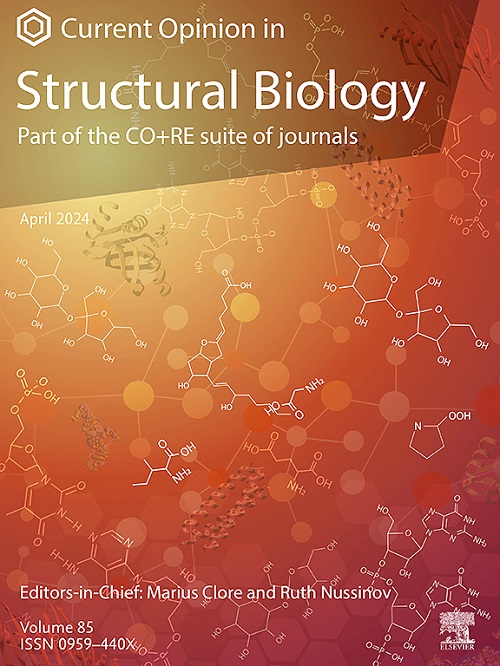建模柔性RNA三维结构和RNA-蛋白复合物
IF 6.1
2区 生物学
Q1 BIOCHEMISTRY & MOLECULAR BIOLOGY
引用次数: 0
摘要
RNA和RNA -蛋白(RNP)复合物是许多细胞过程的核心,但由于RNA的灵活性和相互作用的多样性,确定其结构仍然具有挑战性。这篇综述强调了最近的计算进展,特别是过去两年,在预测和分析RNA和RNP结构方面。我们讨论了基于模板的建模、对接、分子模拟和深度学习方法,重点介绍了整合这些策略的新兴混合方法。特别注意的是建模的工具构象异质性,折叠途径,和动态结合。我们还概述了集成预测的机器学习和模拟技术,并探索了未来的方向,包括量子增强建模。总之,这些发展使RNA和RNP复合物的静态和动态方面的建模更加准确和可扩展。本文章由计算机程序翻译,如有差异,请以英文原文为准。
Modeling flexible RNA 3D structures and RNA-protein complexes
RNA and RNA–protein (RNP) complexes are central to many cellular processes, but the determination of their structures remains challenging due to RNA flexibility and interaction diversity. This review highlights recent computational advances, particularly from the past two years, in predicting and analyzing RNA and RNP structures. We discuss template-based modeling, docking, molecular simulations, and deep learning approaches, with an emphasis on emerging hybrid methods that integrate these strategies. Special attention is given to tools for modeling conformational heterogeneity, folding pathways, and dynamic binding. We also outline machine learning and simulation techniques for ensemble prediction and explore future directions including quantum-enhanced modeling. Together, these developments are enabling more accurate and scalable modeling of both the static and dynamic aspects of RNA and RNP complexes.
求助全文
通过发布文献求助,成功后即可免费获取论文全文。
去求助
来源期刊

Current opinion in structural biology
生物-生化与分子生物学
CiteScore
12.20
自引率
2.90%
发文量
179
审稿时长
6-12 weeks
期刊介绍:
Current Opinion in Structural Biology (COSB) aims to stimulate scientifically grounded, interdisciplinary, multi-scale debate and exchange of ideas. It contains polished, concise and timely reviews and opinions, with particular emphasis on those articles published in the past two years. In addition to describing recent trends, the authors are encouraged to give their subjective opinion of the topics discussed.
In COSB, we help the reader by providing in a systematic manner:
1. The views of experts on current advances in their field in a clear and readable form.
2. Evaluations of the most interesting papers, annotated by experts, from the great wealth of original publications.
[...]
The subject of Structural Biology is divided into twelve themed sections, each of which is reviewed once a year. Each issue contains two sections, and the amount of space devoted to each section is related to its importance.
-Folding and Binding-
Nucleic acids and their protein complexes-
Macromolecular Machines-
Theory and Simulation-
Sequences and Topology-
New constructs and expression of proteins-
Membranes-
Engineering and Design-
Carbohydrate-protein interactions and glycosylation-
Biophysical and molecular biological methods-
Multi-protein assemblies in signalling-
Catalysis and Regulation
 求助内容:
求助内容: 应助结果提醒方式:
应助结果提醒方式:


